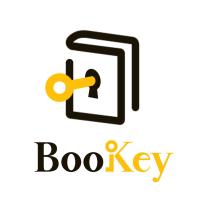Letzte Episode
The Trolley Problem: Ethical Dilemmas Explored by Thomas Cathcart
25. Oktober 2023
Nächste EpisodeChapter 1:Summary of The Trolley Problem
The trolley problem, as described by Thomas Cathcart, presents a moral dilemma involving a runaway trolley and a group of people in its path. The scenario requires an individual to make a difficult decision between actively causing harm to one person or passively allowing harm to come to multiple people.
In the problem, a trolley is heading towards a group of five unsuspecting workers who will surely die if the trolley hits them. However, there is an option to pull a lever that diverts the trolley onto a different track, saving those five workers. The catch is that on the diverted track there is another lone worker who will die if the trolley is redirected.
This scenario poses a conflict between two ethical principles: the principle of utilitarianism, which promotes the greatest overall happiness or well-being for the greatest number of people, and the principle of deontology, which emphasizes moral duties and obligations. In this case, utilitarianism would suggest pulling the lever to save the five workers, since it maximizes overall happiness. On the other hand, deontology would argue that actively causing harm to the lone worker is morally wrong, and it is better to avoid directly causing harm, even if that means passive harm to five others.
Cathcart explores various perspectives and attempts to deepen the complexity of the problem by introducing different variations. For example, he introduces factors such as personal identity and bystander involvement, which can influence people's moral intuitions and decision-making.
Ultimately, the trolley problem by Thomas Cathcart highlights the moral conflicts and ethical dilemmas that individuals may face when making decisions that involve the potential harm of others. It challenges people to consider their moral values and ethical foundations, forcing them to confront the difficult choices they might encounter in real-life situations.
Chapter 2:the meaning of The Trolley Problem
The Trolley Problem is a thought experiment initially posed by philosopher Philippa Foot in 1967 and popularized by Thomas Cathcart in his book "The Trolley Problem: Or Would You Throw the Fat Guy off the Bridge?" The problem presents a moral dilemma involving a runaway trolley and a series of difficult choices.
In the scenario, a person is standing near a railway track, and a runaway trolley is approaching. The person has the power to divert the trolley to an alternate track by pulling a lever. However, on that alternate track, there is a work crew unaware of the approaching trolley, and diverting the trolley would lead to their death.
The basic question presented by the Trolley Problem is whether it is morally justified to deliberately sacrifice a few lives in order to save a greater number of lives. Should the person pull the lever to save the work crew but cause the death of the people on the main track, or should they do nothing and allow the trolley to continue on its original path, resulting in the deaths of the work crew?
The Trolley Problem explores the ethical implications of consequentialism (the belief that the morality of an action is determined solely by its outcome) versus deontology (the belief that the morality of an action is determined by its adherence to rules or principles). It raises questions about the value of individual lives, the intentions behind an action, and the consequences of our choices.
Different versions of the Trolley Problem have been proposed, introducing variations such as pushing a person off a bridge onto the track to stop the trolley or considering the moral implications of actively killing one person to save others.
Overall, the Trolley Problem is meant to challenge our intuitions and moral reasoning, forcing us to confront difficult decisions and to examine the foundations of our ethical beliefs.
Chapter 3:The Trolley Problem chapters
Chapter 1: Introduction
Cathcart introduces the trolley problem, a hypothetical scenario where a person must make a moral decision regarding diverting a runaway trolley to either kill five people or sacrifice one person. He sets the stage for the book by explaining the relevance and significance of ethical dilemmas in our lives.
Chapter 2: Utilitarianism
Cathcart explores utilitarianism as an ethical theory and its application to the trolley problem. He delves into the concepts of consequentialism and the greatest good for the greatest number, discussing the moral implications of sacrificing one person to save five.
Chapter 3: Deontology
In this chapter, Cathcart examines deontological ethics, which focuses on the inherent rightness or wrongness of actions. He explores the ideas of moral duties and principles, discussing how deontologists might approach the trolley problem and the conflicts they might encounter.
Chapter 4: Virtue Ethics
Cathcart discusses virtue ethics, which emphasizes the development of virtuous character traits. He explores how someone guided by virtues would handle the trolley problem and how their behavior differs from the utilitarian or deontological perspectives.
Chapter 5: Contractualism
The author explores contractualism as a moral framework, which considers the idea of social contracts and agreements. Cathcart discusses how contractualists might approach the trolley problem, taking into account the principles of fairness, reciprocity, and consent.
Chapter 6: Moral Pluralism
Cathcart investigates the concept of moral pluralism, which suggests that there are multiple correct answers to ethical dilemmas. He explores how different ethical theories and perspectives can coexist and provide valuable insights into the trolley problem.
Chapter 7: Applying the Trolley Problem
In this chapter, Cathcart examines real-life situations that resemble the trolley problem and delves into how individuals and societies have approached and resolved these ethical dilemmas. He highlights the complexities of applying ethical theories in practice.
Chapter 8: The Trolley Problem and Everyday Life
Cathcart explores how the trolley problem can be applied to various aspects of our everyday lives, such as personal relationships, career decisions, and social issues. He encourages readers to reflect on the moral choices they make in their own lives and the ethical frameworks they rely on.
Chapter 9: Lessons from the Trolley Problem
The final chapter offers a reflection on the lessons learned from exploring the trolley problem and the various ethical theories. Cathcart encourages readers to approach ethical dilemmas with awareness and critical thinking, emphasizing the importance of context, intention, and consequences in moral decision-making.
Chapter 4: Quotes of The Trolley Problem
- "Would you pull the lever to divert the trolley and save five lives, knowing that you would be directly responsible for the death of one innocent person?"
- "Is it morally permissible to take a life to save the lives of others? Are some lives worth more than others?"
- "Does the intention behind our actions matter more than the outcome?"
- "Is it our moral duty to minimize harm, even if it means actively causing harm to someone?"
- "What if the one innocent person tied to the second track is someone you love deeply? Would you still pull the lever?"
- "The trolley problem challenges us to consider the ethical implications of our actions in situations where there are no clear right or wrong answers."
- "Would it be more justifiable to do nothing and let the trolley continue, resulting in the deaths of five people, or actively intervene by pulling the lever?"
- "The trolley problem forces us to confront our instinctive ethical intuitions and reflect on the principles that guide our moral decision-making."
- "Can an individual be absolved of responsibility if they choose not to act, even though they had the power to intervene and potentially save lives?"
- "Ultimately, the trolley problem highlights the complexities of ethical decision-making and challenges our notions of morality, responsibility, and the value of human life."
- 00:00Kapitel 1
RSS Feed
Spotify
Wähle deinen Podcatcher oder kopiere den Link:
https://meinpodcast.de/bookey-book-summary-and-review/feed

